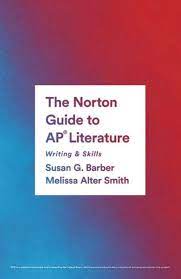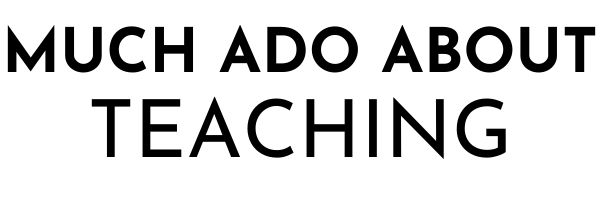True confessions of an English teacher: I am not a Shakespeare lover. Shakespeare is not on my syllabus yearly, but this year when I took Frankenstein out of this year’s curriculum, I couldn’t shake the feeling that I needed to bring back Hamlet. This was confirmed when I got a call from Peggy O’Brien at Folger asking if I would review a new teaching series. (Stay tuned for this AMAZING new Folger series coming next spring). I knew, however, that I would need to revisit my Hamlet plan for a couple of reasons. First, I’m not the same teacher I was the last time I taught Hamlet where students relied on me for explanations and insights, and second, I’ve restructured my lessons around skills and letting students do the heavy lifting instead of me. My goals no longer included having students read every single word of the play (I encouraged but did not require this), making plot the primary focus of class lessons and discussions, and feeling like I had to provide all of the historical context as well as explain every single allusion referenced. Instead, my goals this time through instead focused on breaking down the barriers of Shakespearean language, focusing on characterization and structure as paths to discover universal truths in the play, and setting my students up to do the heavy lifting on their own instead of relying on me for explanation/interpretation.

Update 1/18/2024: The Folger Guide to Teaching Hamlet (along with guides for Macbeth and Romeo and Juliet) is now published, and I highly recommend. The books include activities to immerse students in the language, resources for making meaning of acts and scenes, and essays for teachers to learn more about aspects of the play.
Goal 1: Demystifying Shakespearean language
We began with a Folger technique of line tossing where I chose several lines from Hamlet – not long sections but short lines – and let students practice saying them several different ways – changing tone, inflection, volume, etc. This immediately got the language in the mouths of students as well as familiarized them with several key lines from the play.
Next students paired up and created scenes with their lines. While these lines don’t go together in the play, students are embracing the language and the idea that drama is a different medium with different considerations.
Some observations from day one of Shakespeare:
Students are moving around.
Students are making connections with the text.
Students are smiling and laughing.
Next we jumped straight into the reading – no background on Shakespeare, no formal intro to Hamlet – just straight to reading Act I, scene i. I’m not saying background knowledge is not important or I approach every text this way, but I wanted to get students into Hamlet as quickly as possible so there would be less time to dread reading Shakespeare. We read Act I, scene i three times – 1 – chorally (everyone reading every word at the same time), 2 – reading around the circle changing readers at each hard stop (period, semi-colon, question, etc.), and finally 3 – reading around the circle changing readers with each character change. After each reading, students discussed what they understood and asked each other questions about what they didn’t understand.
Students have now built their confidence with difficult language and practiced different ways to read the play which they will be able to utilize through the unit. Best of all – student engagement was really high.
I cannot recommend Folger teaching resources enough; they have truly changed my approach to teaching not only Shakespeare but other texts as well. (This is an unsolicited endorsement, but I do love Folger and was privileged to attend a training a few years ago).
Goal 2: Choose skill areas for focus.
The last time I taught Hamlet, several years ago, I focused primarily on the plot and built meaning from there. Because of this my plan consisted of lots of front loading, summary questions primarily around plot, reading quizzes, and a few creative activities sprinkled in. After realigning my lessons to skills as a result of the CED, my approach shifted from teaching a text to teaching skills and allowing students to unpack the text on their own. For Hamlet, I chose to focus on characterization and setting. This doesn’t mean we ignore the plot or other skills, but I continuously circle back to the targeted skills to practice critical thinking on a text.
We kicked off Hamlet with the What’s on Your Plate activity that Brian writes about in The Perfect Way to Begin Any Novel. This intro allowed students to think about all of the different facets of themselves which served as a bridge to the complexity in Hamlet’s character.
We circled back to our plate activity near the end of the play and thought about all of the different aspects of Hamlet now that we knew him well. I challenged my students to think about Hamlet like themselves – he is complex with different roles, relationships, feelings, and motivations.
I then asked them to analyze all the things that occupy Hamlet’s mind and find a creative way to show these things on a drawing of Hamlet on chart paper. Here are some of the results:
Another area of focus was structure. We framed many readings with mini-lessons on conflict and how conflict drives plot. Here’s an example:
Goal 3: Provide activities to help students do the heavy lifting.
One of my biggest frustrations this year has been students either not reading or doing a cursory reading of a text followed by an “I don’t understand.” I wanted Hamlet to be different. I told students up front that I would set them up for understanding, but this would not be a unit where students read and I interpret or pick apart every detail for them. Of course, I made myself available to help them think through specific questions in their reading but would not be explaining all of the nuances of each scene; students would be doing this work in their groups. And students rose to my expectations. They dug in, discussed, and used each other to unpack ideas when they realized they didn’t have me. There was some moaning and groaning along the way because this is hard work, but I could not be happier with how this unit went.
Here are a few of the activities we did:
We began the play with the Folger 20 Minute Play and I provided character maps for students to use throughout their reading. With students having an idea of the basic plot, their discussions were more in depth for characterization, conflict, and thematic ideas.
I pulled a few passages for close reading and annotation, primarily Hamlet’s soliloquies (we didn’t do all of these).
Students compared different movie versions of “To Be or Not To Be”. (Someone passed this to me, but I am not sure who. If this is yours, please let me know so I can credit you).
Students read certain Acts in groups with guided discussion questions. I monitored groups but for the most part let students have their own conversations.
We finished with 50 Line Hamlet where students worked in groups to choose an area of focus (either a character, theme, or motif) and create a 50 line script which they delivered as a group. (Example 1, Example 2)
I just read my students final essays on Hamlet and am so pleased. While I did a lot of the work on the front end of each lesson, I took a back seat during class forcing students to think and use each other for understanding. As a result, students are more confident readers, thinkers, and writers.
Here’s a link to the entire Hamlet unit with the daily slide decks; use what you can. I also highly recommend Brian Hannon’s poetry pairings found at LMS Curriculum.
A final added bonus is a field trip to see Fat Ham next month.


Susan Barber teaches AP Lit and Contemporary Literature at Midtown High School in Atlanta, Georgia and serves as the College Board Advisor for AP Lit. In addition to reading, writing, and investing in the next generation, she loves watching college football with her family especially when Alabama is playing.












